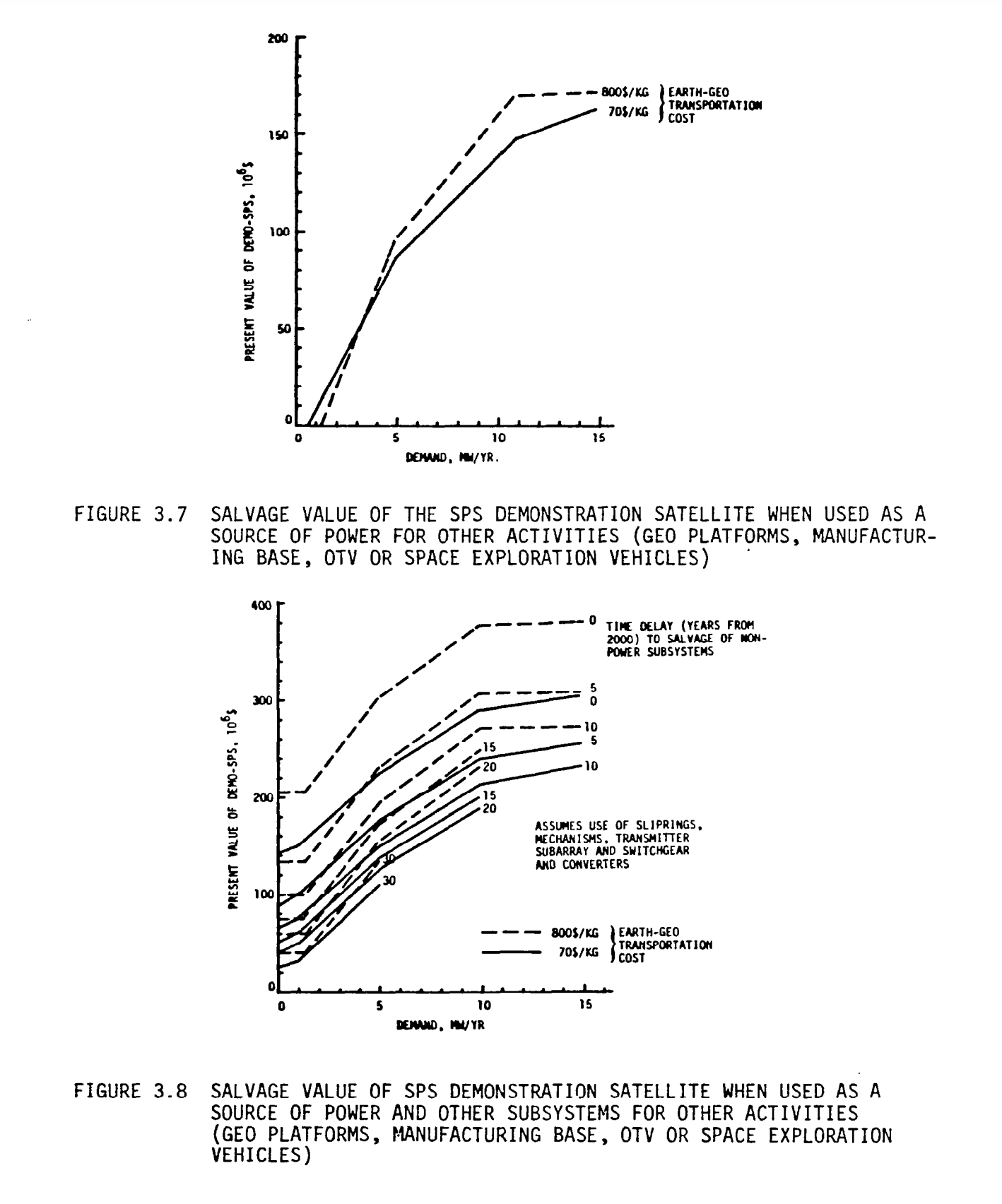End of Life and Salvage Costs for a Solar Power Satellite
The life cycle of any system is a serious consideration. For space, managing the end of satellite life is important to maintain the space environment. Those satellites potentially have lots of value.
A total of more than 40,000 tons of material were launched into orbit since the start of the space age. More then 12,000 tons is still in orbit. [1] Last year more than 1,400 tons were launched into orbit. [2]. The pace of launch is set to increase.
The largest of all of the ambitious projects proposed in the wake of Apollowas space based solar power (SBSP). When NASAlooked at it in 1981, they also looked at what to do with such a satellite at end of life. [3] The study considered repurposing, salvage, recycling, and disposal. Recycling was compared to alternatives like asteroid mining. The results were encouraging.
For a 34,000 ton reference satellite, based on Rockwell proposals, the conclusions were that the end of life value for the satellite could be as high as 31% of the initial capital costs! That value would be after profitably delivering power for 30 years. That would make SBSP satellites a very rich source of materials to jumpstart a cislunareconomy.
From the report:
"A wide range of salvage options for the SPS satellite, ranging from use in and beyond geosynchronous orbit to use in low Earth orbit in return and use on Earth are presented. The satellite can be used intact to provide power for various purposes, it can be cannibalized or it can be melted down to supply materials for space or ground based products. The use of SPS beyond its nominal lifetime provides value that can be deducted from the SPS capital investment cost. The present value of the salvage value of the SPS satellites, referenced to the system initial operation data, is on the order of five to ten percent of its on-orbit capital cost. (Given a 30 year satellite lifetime and a four percent discount rate, the theoretical maximum salvage value is 30.8 percent of the capital cost.) The SPS demonstration satellite is available some 30 years earlier than the first full scale SPS satellite and has a salvage value on the order of 80 percent of its on-orbit capital cost. In the event that it becomes desirable to dispose of either the demonstration of full scale SPS satellite, a number of disposal options is presented for which intact disposal costs are less than one percent of capital costs." [4]
References:
References:
[1] European Space Agency - ESA "Space Environment Report" https://www.sdo.esoc.esa.int/environment_report/Space_Environment_Report_latest.pdf
[2] Post on annual payload mass launched - https://www.linkedin.com/posts/edtate_starship-sbsp-spacetech-activity-7157437967257468928-nzfM
[3] NASA - National Aeronautics and Space Administration, "Satellite power system salvage and disposal alternatives" https://ntrs.nasa.gov/api/citations/19810002948/downloads/19810002948.pdf
[4] NASA - National Aeronautics and Space Administration, "Satellite power system salvage and disposal alternatives" https://ntrs.nasa.gov/citations/19810002948







